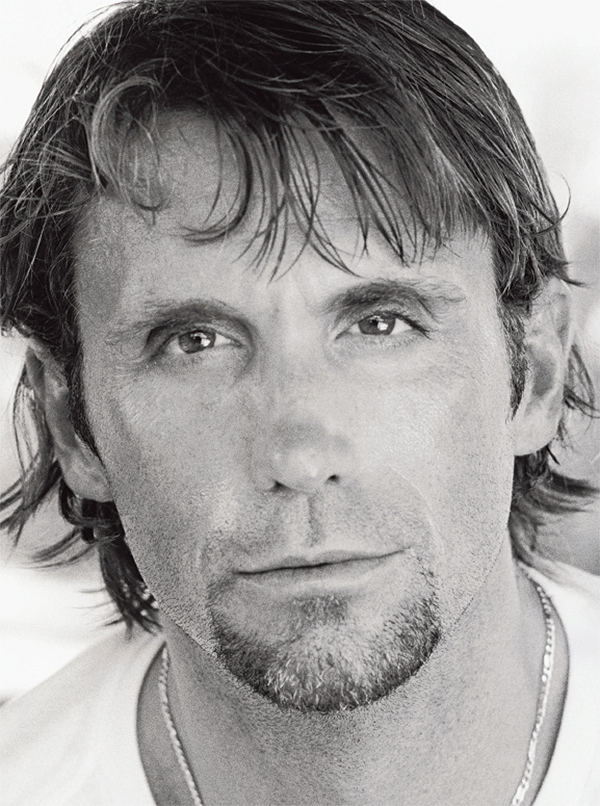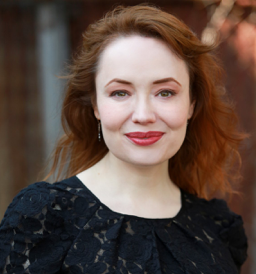If beauty is in the eye of the beholder, then Richard Phibbs (BA 1985 Victoria) is unusually blessed. The New York-based photographer from Calgary has snapped pictures of Oscar winner Adrien Brody for Paper magazine, sultry cover girls for Victoria’s Secret catalogues and countless advertising campaigns for the Gap and Ralph Lauren. But Phibbs finds the greatest beauty in everyday life. “Aesthetically, I like reducing things to the simplest of terms,” he says. “Stripping things down to the most basic is what’s most beautiful. I like real life – I don’t believe in retouching.” In Milan, Italy, this coming December, an exhibition will showcase some of his best work. Titled Nobody’s Children, the black-and-white photographs depict Romanian children with HIV. A passionate commitment to their cause has led Phibbs to become an activist, an unusual turn for a rising player on the New York fashion scene.
How Phibbs defines beauty is immediately evident when you walk into his studio. On the 11th floor of a converted warehouse in Chelsea, the 2,000-square-foot loft has a breathtaking view of Lower Manhattan to the south and New Jersey to the west. Poke around the piles on Phibbs’s work table and you might find contact sheets filled with images of such famous faces as Matthew Broderick, Jane Fonda and Tobey Maguire. But pride of place is reserved for the giant black-and-white photographs on the walls. None of the subjects are celebrities; these faces belong to people Phibbs met on trips to the Mississippi Delta, rural Texas and New Mexico. Those profiled include two children and their startlingly young grandmother, an elderly man, and a tattooed youth, and all exude a quiet dignity. “When you’re doing a portrait of a person, you’re trying to capture what’s special about them,” says Phibbs. “I’m into hope, not the darkness of life.”
His philosophy is underscored by the ubiquitous presence of Huck, his constant companion. Phibbs discovered the stray mutt five years ago in Guadeloupe while on assignment for Travel & Leisure. There’s a photo of Huck on the plane home, and that scrawny canine bears little resemblance to the energetic Benji look-alike racing around the studio today. It seems that Phibbs has an unusual talent for recognizing potential.
Still, he’s the first to credit those who saw potential in him. After he graduated with a BA in English and art history in 1985 while attending Victoria College, Phibbs spent a year at the Ontario College of Art (now the Ontario College of Art and Design) in Toronto before heading to the prestigious Parsons School of Design in New York. He started as an assistant at the New York ad agency Carlson & Partners, and worked his way up to art director. His boss, Sandy Carlson, became a close friend and mentor, and it was Carlson who helped Phibbs become a professional photographer. It’s a classic story of serendipitous discovery: Phibbs, who had never formally studied photography, had taken some playful black-and white pictures of friends on the beach at Coney Island, N.Y. “Sandy was the one who saw the pictures on my desk when I was an art director,” says Phibbs. She asked who had taken the shots. When Phibbs told Carlson that he had, she hugged him. Later, she suggested that he shoot test photographs for the new Polo Ralph Lauren campaign. “I’d never even shot with colour film before,” he says. Carlson mixed Phibbs’s pictures with some taken by a well-known photographer and asked Ralph Lauren himself to choose the photos he liked best. The fashion guru zeroed in on Phibbs’s work, thereby launching him on a new, unexpected career.
Phibbs continued to work as an art director and part-time photographer for the next couple of years; in 1995, he left the agency to photograph full time. He was soon shooting portraits for magazines such as Esquire, Vanity Fair and Paper, and ads for the likes of Calvin Klein and Giorgio Armani. For the Gap, Phibbs photographed four campaigns, including “Holiday Is Here” and “Gap Leather.”
“His photographs are not typical,” says Teddy Borsen, a partner at Della Femina, Rothschild, Jeary and Partners, a top New York ad agency that has hired Phibbs for several campaigns. “In a lot of fashion photos, you feel cut off from the subject. They can be cold. But Richard captures the humanity of the subject. It’s a rare talent.”
For Phibbs, however, commercial success wasn’t enough, and by late 2000 he was thinking hard about his priorities. “I’ve been really fortunate,” he says. “But you get to a place where you’re trying to decide what you really want to do. Fashion has importance, but it’s not the most important thing. I decided I needed to take some photographs that didn’t sell clothes.”
On January 7, 2001, Phibbs read a New York Times article that changed his life. It was about Romanian orphans with HIV, and it immediately touched a nerve with Phibbs, who has lost several close friends to AIDS. “I thought, maybe there’s a way I could take a photo that would motivate people to help,” he says. He called Mary Veal, an American woman mentioned in the article who had been working with the children in Romania for several years. By April, Phibbs and several friends were flying to Bucharest for the first of two visits to photograph the ailing children. And while Phibbs is still very much involved in fashion (he recently began directing television commercials, including one for the fragrance Drakkar Noir), he has become a serious activist, working with Veal to raise money for anti-retroviral medications for kids with HIV. He has turned his photographs into a book, called Nobody’s Children, designed by his friend Sandy Carlson (who died of lung cancer in March). He is working out a publication deal for the book, but Giorgio Armani has already agreed to sponsor an exhibition of the Nobody’s Children photos.
“The power of photographs is just incredible,” says Phibbs. His travel schedule is already heavy with fashion and celebrity work, but he’s planning to travel to other financially impoverished countries to take more pictures of children with HIV. His black-and-white portraits of the Romanian children range in mood from quietly dignified to openly joyous, in spite of the signs of illness that are sometimes painfully apparent. Even the frailest among the children seem to have a strength and spirit that Phibbs has captured in their eyes and bearing. “It’s brutal over there, but there’s a lot of hope in the children,” he says. It doesn’t get any more real than that.
Hilary Davidson (BA 1994 Victoria) is a freelance writer in New York.






